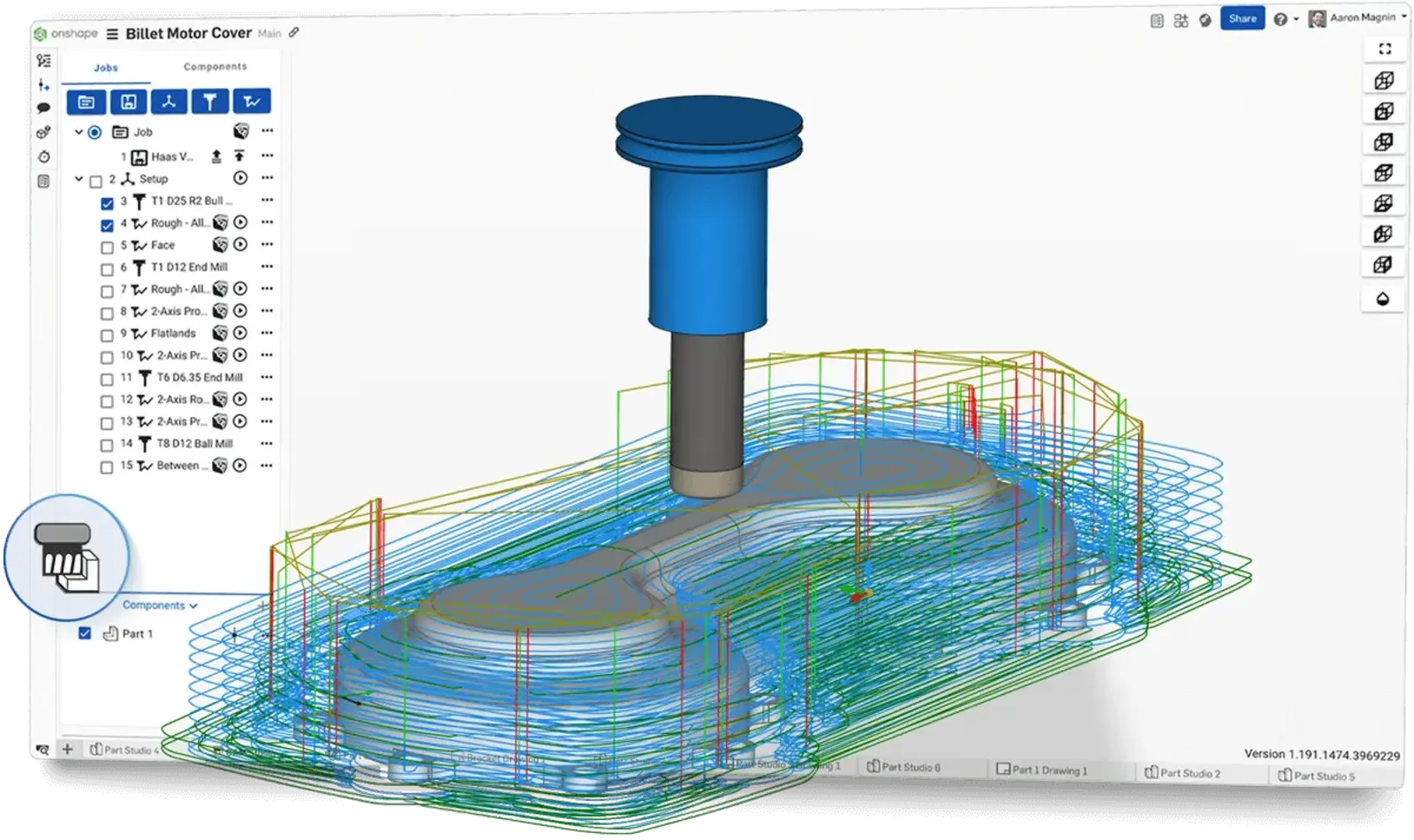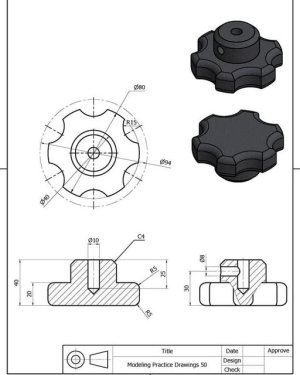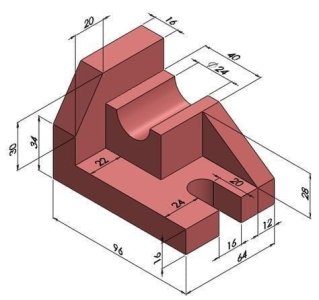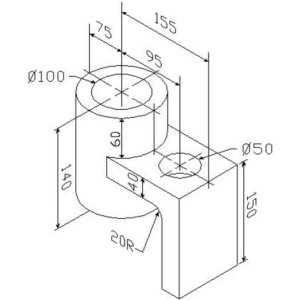Let's go backwards for a moment, so I understand what you want to do.
There are two types of software associated with 3D printing, regardless of the printer type, (filament - like your Creality, or resin):
1) Design software, (aka CAD or object modeling software) to create objects to be printed. This requires considerable time and effort to master whatever program is used and divides the printing community into two distinct camps:
Those who design their own custom objects, and the rest who print objects designed by others.
2) Slicer software converts predesigned objects into G-code transparently for the user. G-code is the language the printer uses to command itself how to print the object. In a similar manner, machinists use G-code to operate programmable 5-axis mills and lathes.
If you want to print a pre-made object yourself, you can download thousands of free objects from file-sharing sites like Thingverse. The most popular format for downloaded objects is called STL format.
Example: Here's a naval cannon available on Thingverse:
https://www.thingiverse.com/thing:338952
You can download the file, decompress it, (it will be unpacked as multiple STLs for each part of the cannon) and open each STL using a slicer (nearly every 3D printer comes with slicer software that needs to be configured for your particular make and model of printer, and filament type to be used to set the printing temperature.)
Once you load the STL into your slicer, it will tell you the physical dimensions of the object being printed. It the size is too large or small, you can easily scale the final size you want using the slicer. Slicing software is generally very simple to use, and you can play around with the settings with a pre-made object without damaging anything for practice. Once the slicer is configured, (usually automatically once the make/model of printer is entered) it will indicate if the object(s) won't fit on the build plate.
Raise3D has a (free) slicer and it's excellent as a training aid -even if for those who are interested in 3D printing but don't own a 3D printer. I didn't know much about 3D printing but since it was the slicer used at work, (and compatible with many other non-Raise3D filament printer brands) so I downloaded it at home, and loaded a simple Thingverse file and began my 3D printing education.
I was shocked how easy it was to pick up and could perform slicing basics with an hour or two of experimentation. The next day at work, I printed my first 3D object.
For anyone following along, here's a link to download the Raise3D slicer (IdeaMaker):
https://www.raise3d.com/download/
YouTube has plenty of excellent Raise3D-produced videos to help learn it quickly.
There are many other slicers available, (both free and paid with more features) but they all do the same thing.
Modeling Software runs in two general types:
1) Professional Level: (Almost all paid subscriptions) like SolidWorks, Catia, and ProE, just to name a few. These cost thousands of dollars a year.
One popular exception is Fusion 360, (a form of SolidWorks Lite). It offers high-end parametric capabilities, -meaning if you design something and want to change it later, the change ripples through the model and automatically updates anything the change affects. This saves mucho time.
Example: You model a vehicle and the door handle is too thin. Changing the door handle may affect the pocket in the door it's attached to, so the depth of the pocket needs to change as well. Parametric modeling updates the model without the designer having to dig through it looking for problems caused by the revised door handle. It's super-powerful and saves valuable time, but still has a steep learning curve.
Fusion 360 has a free version and a paid subscription that offers more capabilities. After all, they want people to upgrade and make some money.
2) Hobbyist Level: Blender, TinkerCAD, and SketchUp, are good examples. There are many others. Nearly all are free, but they're likely easier to master than Fusion 360, though less capable in the options they offer in many cases.
What's the best design software? The one you know how to use that produces the outcome you want.
What's the easiest way to learn how to use any software? Classroom or formal training with instant feedback from a teacher. Many community colleges and local community centers offer CAD training since a lot of people want to learn how to create their custom objects. Even better, find someone local and invest in one-on-one tutoring. You will get instant feedback that eliminates the frustration you will face when a YouTube video doesn't work.
When I decided to learn 3D modeling, many orbits ago, I started out with online videos, and grew frustrated up because something wasn't explained in a way I comprehended or the author performed a step that wasn't shown since they were very familiar and forgot what it's like to be on the other side of the screen. I nearly quit, but that isn't my nature. After a few weeks, I grabbed a pair of digital calipers (highly recommended) and measure something around the house and began modeling it.
My efforts gave the desired shape for the most part, but not knowing what I didn't know, there were many mistakes built-in. I still have that original object to remind me what it's like to be at the base of a tall mountain look toward the summit. The climb was worth the view but it didn't happen fast or easily.
Too many online videos teach what a tool can do but don't really show how it can be used in conjunction with the other tools in the software. It was like being given a hammer, nails, wood, and a saw and then trying to build a house. This exemplifies why so many would-be modelers get frustrated and quit.
The key to becoming a proficient 3D modeler is understanding how the program's tools operate, and how to use them in combinations, (called workflow) to achieve the desired results. This boils down to practice, practice, practice.
For the most part, there is no one, right way to create an object. As a 3D modeling instructor later on, I emphasized this approach to spark creativity by demonstrating multiple ways to get the same outcome. Nobody learns the same way and the one-size-fits-all approach doesn't produce efficient modeling skills in a classroom of individuals. Building a student's self-confidence brushes frustration aside when the going gets tough.
I was fortunate to be able to take a class from a teacher whose reputation was well-known to me years before. He emphasized the philosophy I just mentioned beginning on the first day of class. Again, the best software, is the one that works for you. They can give the same end result, using the same types of tools with different names. If one free program doesn't resonate with you, try another for a few weeks.
A few years later, I taught small groups of students using his proven methodology and was impressed how fast their skills had progressed when they returned months later for follow-on training. Each had developed a workflow of their own.
3D modeling is as much a mindset as a skill. Knowing that made all the difference for me. Your milage may vary.
I hope my long-winded explanation helps answer some questions for anyone patient enough to follow along. Fire back if I didn't explain it coherently and I'll try to do better.
CC












